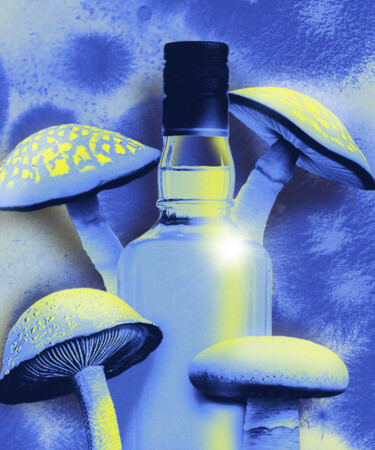In early March, reports from Lincoln County, Tenn., emerged of a dark, soot-like film coating outdoor surfaces from houses to cars to trees. Known as whiskey fungus, or Baudoinia compniacensis, the mold — which originated at the Jack Daniel’s distillery — has been growing seemingly out of control in the immediate area surrounding the distillery, causing strife between the whiskey producer and local residents.
In an interview with The New York Times, Christi Long, owner of the event space Manor at ShaeJo, said that the fungus has consumed the roof and walls of the mansion as well as the rock garden, gates, and branches of the ground’s trees. She revealed that despite the fact that she and her husband power wash the coating every three months, it constantly grows back.
To learn more about whiskey fungus and the specifics on the situation in Lincoln County, VinePair tapped whiskey pro Jose Guzman, bar manager of NYC’s Flatiron Room.
“Just like us, whiskey fungus loves to be around whiskey and grows wherever there’s whiskey aging,” Guzman explains. “It thrives off the alcohol lost during the aging process known as angel’s share. As the fumes come out of the whiskey and evaporate, they not only lose 1–2 percent of the barrel, but they attract this strain of fungus.”
As described by Guzman, whiskey fungus can grow naturally wherever there are spirits aging — though luckily, it has no impact on the spirits themselves as the casks are sealed tight. The mold can only reach the angel’s share, which evaporates out of the cask, hence why the fungus tends to grow on external surfaces.
Though it has no impact on the spirits themselves, the same cannot be said for its visual impact. In order to resolve the situation, a number of Tennessee residents have demanded that Jack Daniel’s install air filters in its barrelhouses. However, Guzman reveals that the installation of filters would have an impact on the flavor of the whiskies, eliminating this solution as a viable option. The only way to truly eliminate whiskey fungus is to eliminate its alcohol supply, which won’t be happening in Lincoln County any time soon.
Unfortunately, Guzman reveals that there’s no real way for distillers to protect themselves from potential outbreaks. “If you’re aging a lot of whiskey, it’s bound to be attracted and act like a barfly,” he says. However, while whiskey fungus can — and will — grow anywhere the spirit is present, the situation at Jack Daniel’s has exploded purely because of the sheer amount of whiskey being produced there. “Jack Daniel’s has such high demand that they’ve been building more rickhouses to house more barrels,” Guzman says. “With so much whiskey aging in one spot, it’s a party for the fungus to grow and unfortunately for the town, it seems to be taking over.”
Luckily, the problem seems to only be an aesthetic one, and Jack Daniel’s says the fungus has been deemed safe. Donna Willis, director of technical services, maintenance, and barrel distribution at Jack Daniel’s, told The New York Times: “Could it be a nuisance? Yeah, sure. And it can be easily remedied by having it washed off.”
However, as the same article went on to highlight, not everyone agrees. While it may not have any clear adverse effects on human health, James A. Scott, a professor at the Dalla Lana School of Public Health at the University of Toronto, says that the fungus is “destructive,” capable of sticking to any outdoor surface, and that he’s even seen “trees choked to death by it.”
Despite claims from Jack Daniel’s that whiskey fungus is safe, Guzman wonders if a non-partial study would report the same findings as the distillery. “I don’t think we have a ‘The Last of Us’ sort of problem, but you never know,” he says.
